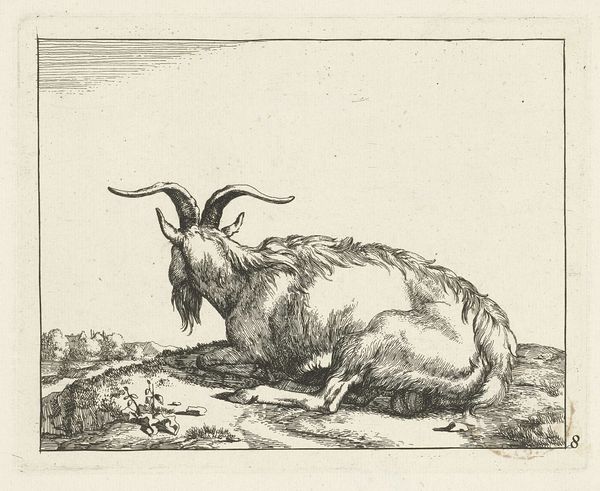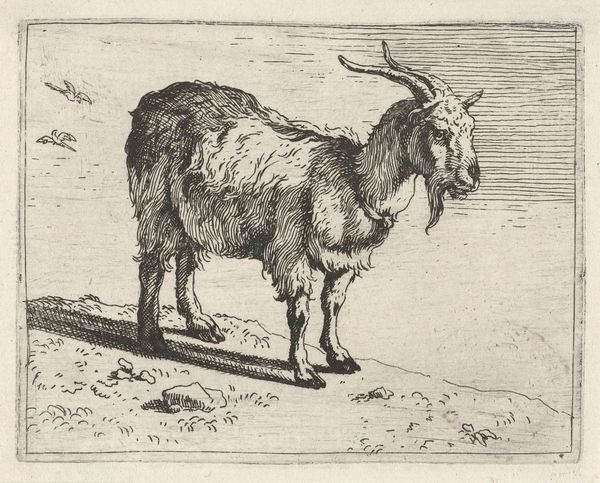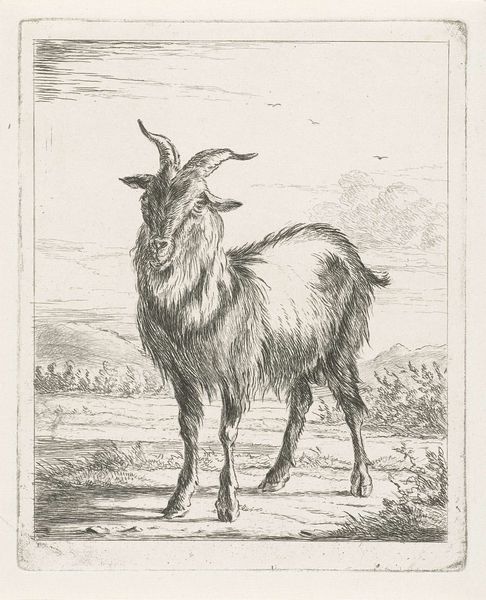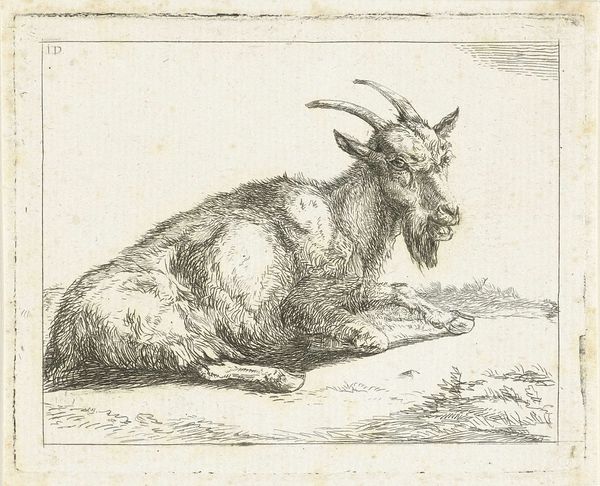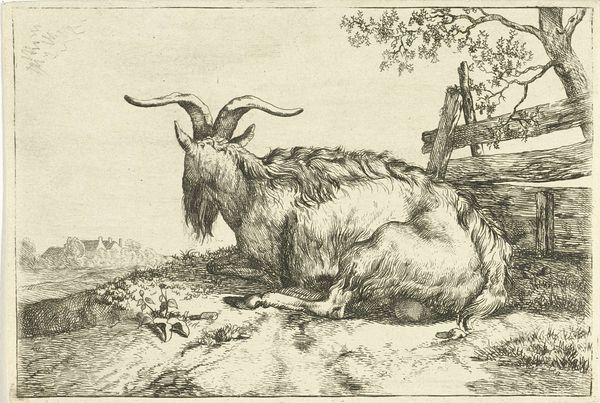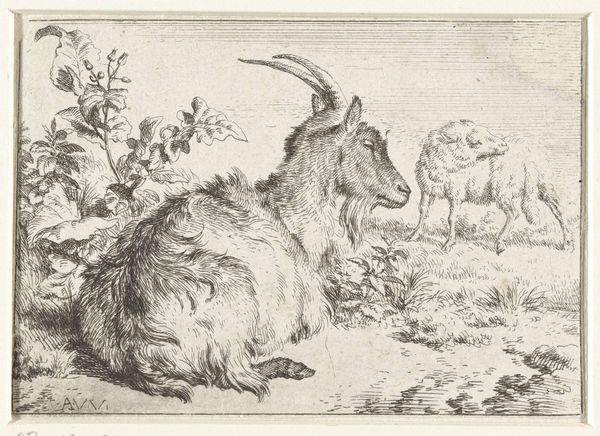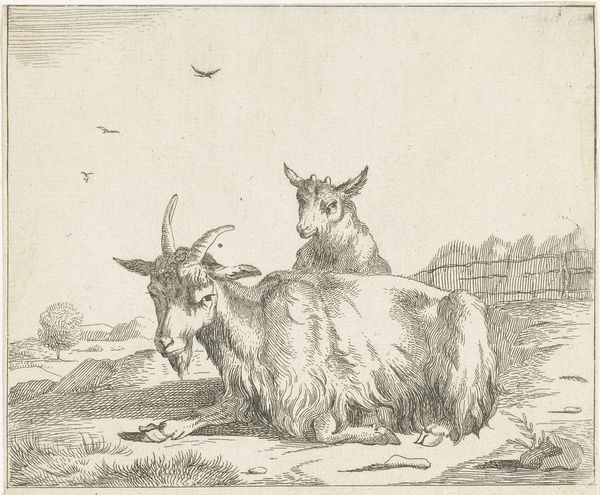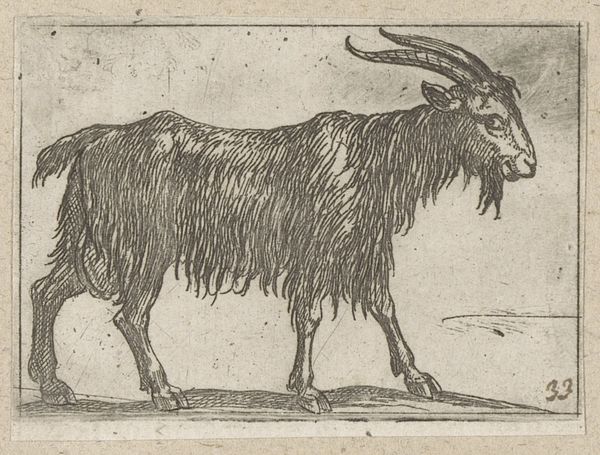
drawing, ink, engraving
#
drawing
#
animal
#
pen illustration
#
landscape
#
ink
#
engraving
#
realism
Dimensions: height 117 mm, width 150 mm
Copyright: Rijks Museum: Open Domain
This image shows a goat standing proudly on a small hill, rendered in etching by Marcus de Bye in the 17th century. Look closely, and you’ll notice the entire image is composed of lines, carefully incised into a metal plate. De Bye would have covered a copper plate with a waxy ground, then used a sharp needle to draw the goat, exposing the metal beneath. The plate was then immersed in acid, which bit into the exposed lines, creating grooves. After removing the ground, ink was applied, filling these grooves, and the surface wiped clean. Finally, the image was transferred to paper under immense pressure, resulting in the print we see today. Etching allowed for a level of detail that was difficult to achieve in other printmaking methods. The quality of line in this work – notice the animal’s textured coat and the rocky landscape – speaks to De Bye’s skill. In his time, printmaking was a vital industry, connecting artists to a wider audience and driving innovation in technique. By focusing on the careful labor involved, we can appreciate this print not just as an image, but as a product of craft, commerce, and artistic vision.
Comments
No comments
Be the first to comment and join the conversation on the ultimate creative platform.

